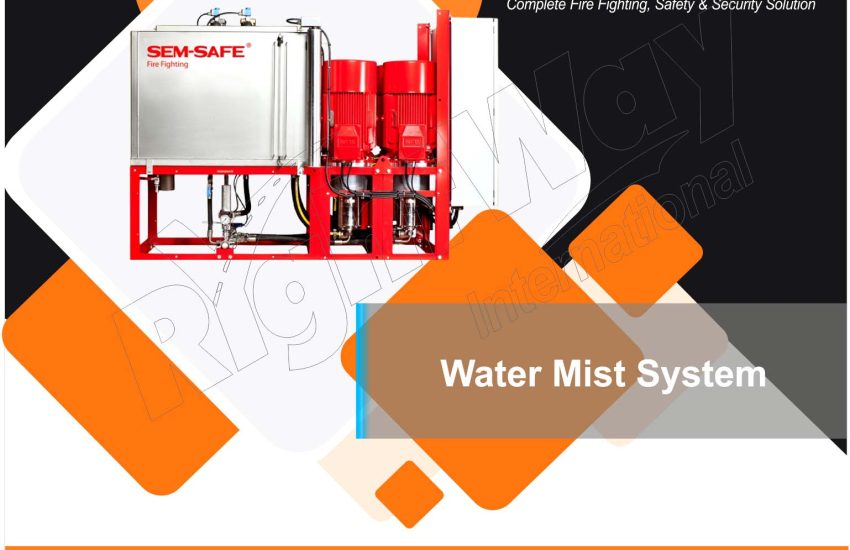What is a Water Mist System?
Water Mist System is an innovative fire protection technology that uses finely atomized water droplets to suppress fires. This system offers a highly efficient and effective means of firefighting, utilizing significantly less water than traditional sprinkler systems. Water mist systems are particularly beneficial in environments where water damage is a concern or where rapid fire suppression is critical.
How Does a Water Mist System Work?
- Detection: Similar to other fire suppression systems, water mist systems employ heat or smoke detectors to identify a fire. Once a fire is detected, the system activates.
- Atomization: Upon activation, water is pumped through specialized nozzles that create a fine mist of water droplets. These droplets are typically between 10 and 100 microns in diameter.
- Fire Suppression: The water mist works in two primary ways:
- Cooling Effect: The mist rapidly absorbs heat from the fire, lowering the temperature.
- Oxygen Displacement: The mist also displaces oxygen around the fire, reducing the combustion process.
Components of a Water Mist System
- Water Supply: The system requires a reliable water source, which you can connect to the building’s water supply or a dedicated tank.
- Pump: Operators use high-pressure pumps to create the necessary pressure for automization.
- Nozzles: Use specialized nozzles to generate a fine mist, and configure them to provide coverage over specific areas.
- Control Panel: Monitors the system, detects fires, and activates the water mist discharge.
Applications of Water Mist Systems
Water mist systems are suitable for a variety of applications, including:
- Data Centers: Protecting sensitive electronic equipment from fire without the risk of water damage.
- Historic Buildings: Safeguarding valuable artifacts and structures where traditional suppression methods may cause harm.
- Marine Environments: Providing effective fire protection on ships and offshore platforms.
- Industrial Facilities: Protecting high-hazard areas where flammable materials are present.
Advantages of Water Mist Systems
- Reduced Water Usage: Uses significantly less water than traditional systems, minimizing water damage.
- Versatile and Effective: Effective against a wide range of fire types, including Class A (ordinary combustibles) and Class B (flammable liquids).
- Minimal Cleanup: Leaves little to no residue, allowing for faster recovery and less disruption after an incident.
Challenges and Considerations
- System Design: Requires careful engineering and design to ensure proper coverage and effectiveness.
- Maintenance: Regular maintenance is essential to ensure all components are functioning correctly and to comply with safety standards.
- Training: Personnel must be trained in the operation and maintenance of the system to ensure effectiveness in an emergency.
Conclusion
Water mist fire suppression systems provide an efficient and effective solution for fire protection in a variety of environments. By leveraging the unique properties of water mist, these systems offer significant advantages over traditional fire suppression methods, including reduced water usage and minimal damage to property. Understanding their operation, components, and applications can help organizations implement effective fire safety strategies that protect lives and assets. Regular maintenance and proper training are key to ensuring these systems are ready to perform when needed.


